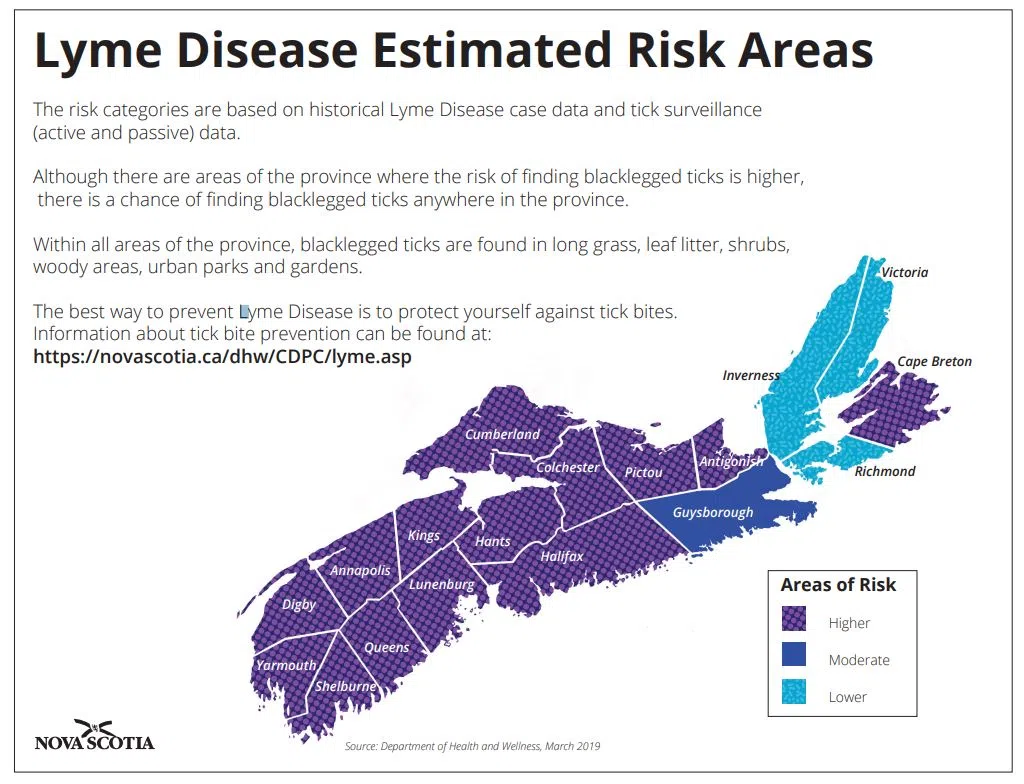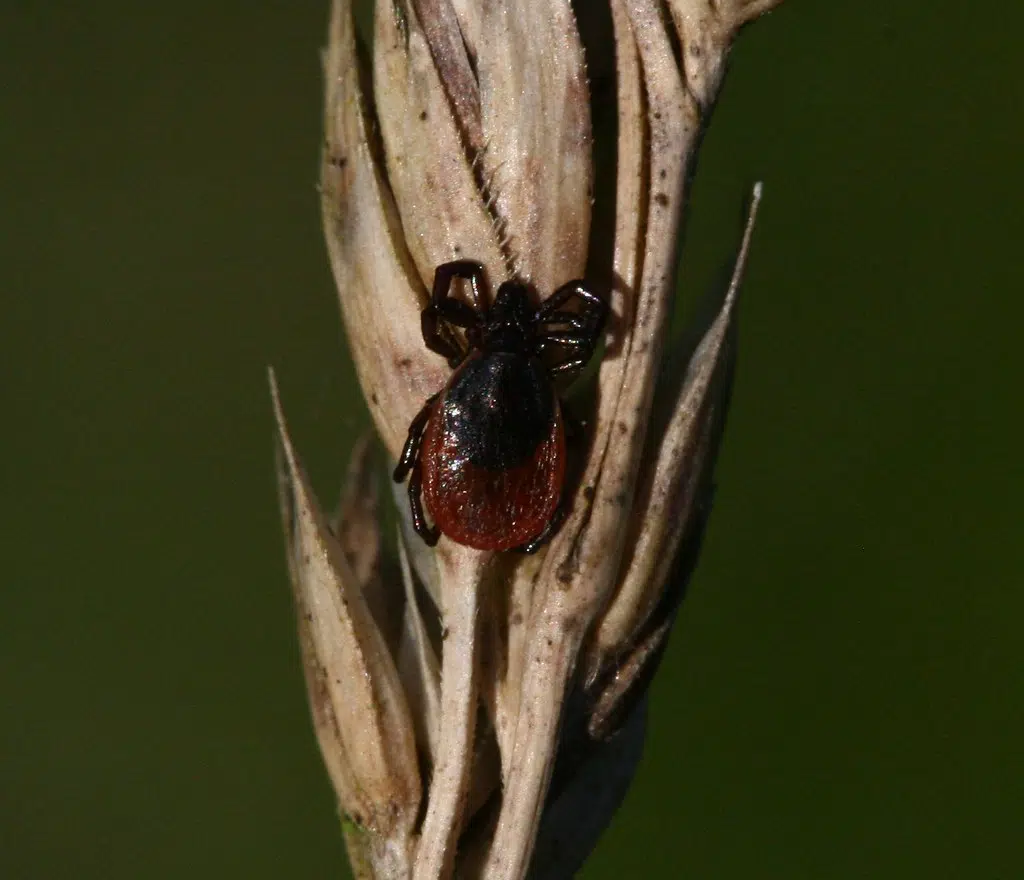May is National Lyme Disease Awareness Month and as such Nova Scotian stakeholders are trying to raise awareness on the current situation in the province.
Nova Scotia last reported on its Lyme disease statistics in 2019 as part of its annual Annual Notifiable Disease Surveillance Report, however, the pandemic prevented those reports from being completed for the past two years.

An excerpt from the Annual Notifiable Disease Surveillance Report, which was the last time the province reported on Lyme statistics. Photo: Nova Scotia Government.
Donna Lugar is the founder of the NS Lyme Disease Support Group and says despite not having the data to confirm it she believes Lyme is now more prevalent than ever. “Anecdotally, I am hearing of more cases, so we would really like to see from the province the data to back up what we are hearing,” Lugar said.
She also has concerns about how serious the medical community in Nova Scotia takes Lyme disease.
During a presentation at the IWK in 2019 that aimed to educate local doctors on the risks of Lyme disease the presenter, Dr. Eugene Shapiro at one point said “It’s only Lyme, it’s not HIV or anything,”.
Dr. Shapiro is the Co-Director of Education at Yale Center for Clinical Investigation, but Lugar found those comments disturbing, “A doctor we invited here to teach us about the risks gave a presentation just days before we were hosting the Bridgewater Lyme Conference where he was downplaying the severity,” Lugar said.
Early symptoms of Lyme disease include fever, headache, fatigue, and a characteristic skin rash called erythema migrans.
Lugar says the fatigue experienced in some cases can be extreme and debilitating, “Imagine being too tired to even lift your head, that’s what Lyme can cause,”.
Other provinces across Canada have been able to release their annual reports on Lyme disease so Lugar would like to see Nova Scotia follow suit, especially as when figures were last reported in 2019 Nova Scotia was leading the way in cases on a per capita basis.
However with no word on when the next figures are set to be released Lugar says it’s on Nova Scotians to remain proactive in protecting themselves from Lyme.
Lyme is contracted in humans most commonly after they are bit by a deer tick.
Deer ticks can be found across the province but are particularly popular in wooded areas and tall grasses.
In 2019, when the province last updated its Lyme risk map only four counties were not listed as high risk, though Lugar believes if the map were updated based on new data it’s likely the entire province would be considered high risk.

A map of Nova Scotia showing regional risks of Lyme disease, last updated in 2019. Photo: Nova Scotia Government
Lugar says if you are going to be out in those types of places you should be wearing long sleeves and pants and after any excursions you should check yourself for any potential bites.
Bites can often present a circular red rash but Lugar says that is not a guarantee so checking yourself for ticks is the best way to ensure you are safe.










